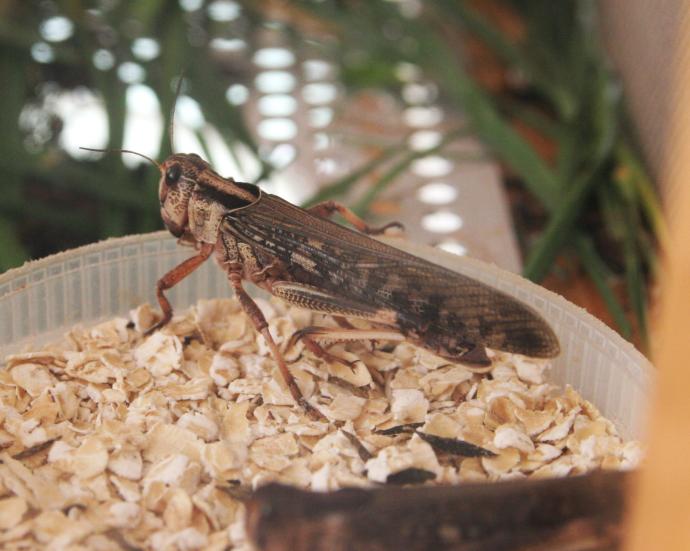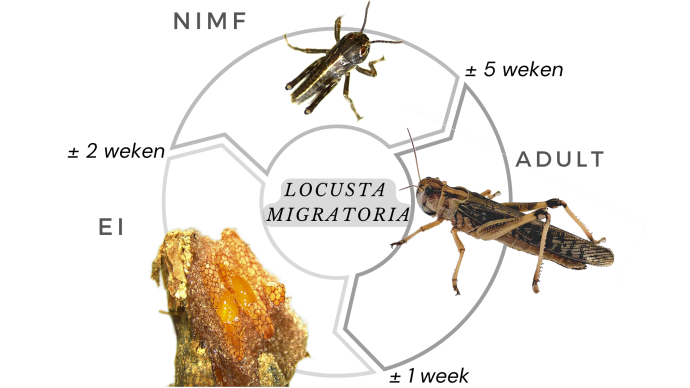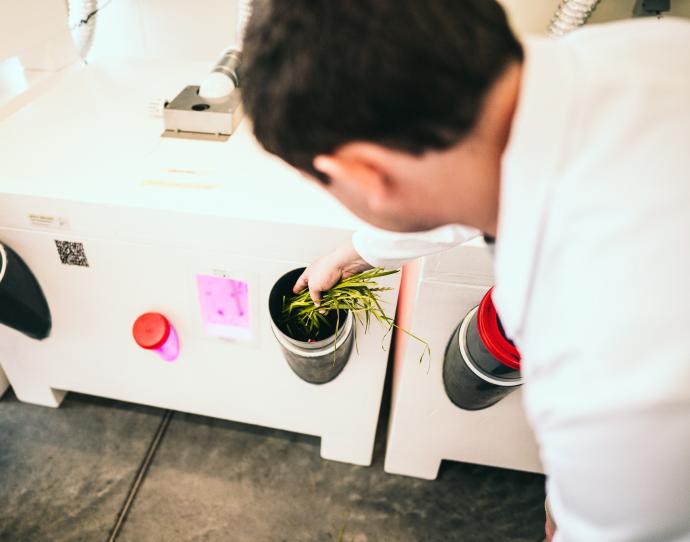

The migratory locust is a very fascinating insect species, as it can adopt two different phenotypes. Despite the rearing being slightly more challenging than other species, this insect has great potential in the food sector. Meanwhile, a Novel Food dossier (EU) for certain applications of this insect has been approved.
The migratory locust (Locusta migratoria) belongs to the genus Locusta, family Acrididae. They are distributed worldwide, however, are scarce in Europe today. Locusts are known for their ability to form a plague. Swarms can cause extensive damage to green vegetation and crops, with catastrophic consequences for agriculture. The European migratory locust is a specialist and feeds mainly on crops of the grass family. They can adopt two different phenotypes: the gregarious and the solitary phase. At low population densities, the insects are solitary. When population density increases, locusts transform to a gregarious phase: they become more active, form swarms and change color. In production, migratory locusts occur mainly in the gregarious phase. An adult migratory locust measures 6 cm on average.
European migratory locusts find application mainly in food. A Novel Food dossier was approved (2022) in the European Union for the marketing of dried and migratory locusts.

Migratory locusts are hemimetabolic insects. In their growth stage, they are called nymphs and they do not undergo a pupal stage to transform to adult. The adult insect deposits its eggs in moist substrate. To do this, it digs a tunnel with its ovipositor, into which it lays its eggs and then covers them with soil. Locusts are very specific regarding the oviposition substrate: this should ensure the survival of the offspring. A good oviposition substrate consists of moistened peat. After approximately 14 days, the eggs hatch. If environmental conditions are optimal, the life cycle (egg to egg) is complete after about 2 months.

Under optimal conditions, it takes about 5 weeks for a nymph to grow into an adult insect. Both adult insects and nymphs can serve for applications, depending on desired characteristics. European migratory locusts depend on light and a high temperature (35 °C). The adult insects can fly and are therefore housed in cages or closed systems. The latter is preferred, as they can induce allergies in the breeder, mainly through their feces. Migratory locusts are fed fresh grass and wheat bran as supplements. The daily provision of fresh grass satisfies the locusts' moisture requirements. The supplementary dry feed is provided ad libitum. This is important since migratory locusts are highly cannibalistic, especially when their dietary requirements are not adequately met. Breeding locusts in optimal conditions can lead to the results presented below.

She now maintains the insect colonies in the Insect Pilot Plant and assists in research regarding insect optimisation and the use of by-products as insects feed.
Ann onderhoudt de insectenkweek in de Insect Pilot Plant en helpt mee in het onderzoek naar productie-optimalisatie en het gebruik van nevenstromen in het teeltproces.